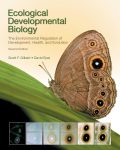In today’s eco-devo class, we’re going to be talking about a general phenomenon: the physical reality of your feelings, as witnessed by changes in gene expression. Seems appropriate for Valentine’s Day, right? On Monday I lectured on a few principles of gene regulation, and how environmental factors are transduced into patterns of epigenetic activity. Today, the students are going to answer questions and give explanations on the mechanics of all that, and then on Friday, they’ll discuss this paper: “Maternal care as a model for experience-dependent chromatin plasticity?” by Meaney and Szyf. Here’s part of true love:
The students are going to explain it all to me later this week, so I don’t want to spill all the beans, but in short, these are the results of studies in mice. Happy baby mice are licked and groomed by their mothers, while less happy mice are neglected and stressed. Being groomed increased serotonin levels, which activates adenylate cyclase, which increases cytoplasmic cyclic AMP levels, which activates a serine-threonine kinase called PKA, which activates a DNA binding protein that demethylates specific DNA sequences. Some of these sequences regulate stress responses in the hypothalamic-pituitary-adrenal axis, so those loving mommy-snuggles are changing how baby mice respond to stressful situations, and those responses persist long into adulthood.
So maternal care, or lack of care, is drilling right down to the structure of DNA and making lifelong modifications to your feelings. At least, if you’re a mouse, and humans almost certainly have the same biochemical arrangement. And a scientist can rip out some of your DNA and find a different pattern of epigenetic marks in individuals who had a loving relationship with Mom versus those who were neglected. It’s written in your semi-permanent epigenetic record.
Of course, this is just one pathway, and there are multiple regulatory pathways modulating stress responses, so all is not lost if you have one bad mother. These individual effects are sort of permanent, though, and would require alternative compensatory mechanisms to be overcome. Also, keep in mind that bad mothers could be a product of bad grandmothers, and that these epigenetic modifications can ripple across multiple generations.
Indeed, maternal effects could result in the transmission of adaptive responses across generations. In humans, such effects might contribute to the familial transmission of risk and resilience. Finally, it is interesting to consider the possibility that epigenetic changes could be an intermediate process that imprints dynamic environmental experiences on the fixed genome, resulting in stable alterations in phenotype – a process of environment-dependent chromatin plasticity.
I hope you all have an opportunity to stimulate some environment-dependent chromatin plasticity today. If you don’t have a date, you can at least call your mom, or be kind to a child. Modify someone’s DNA with a hug!










